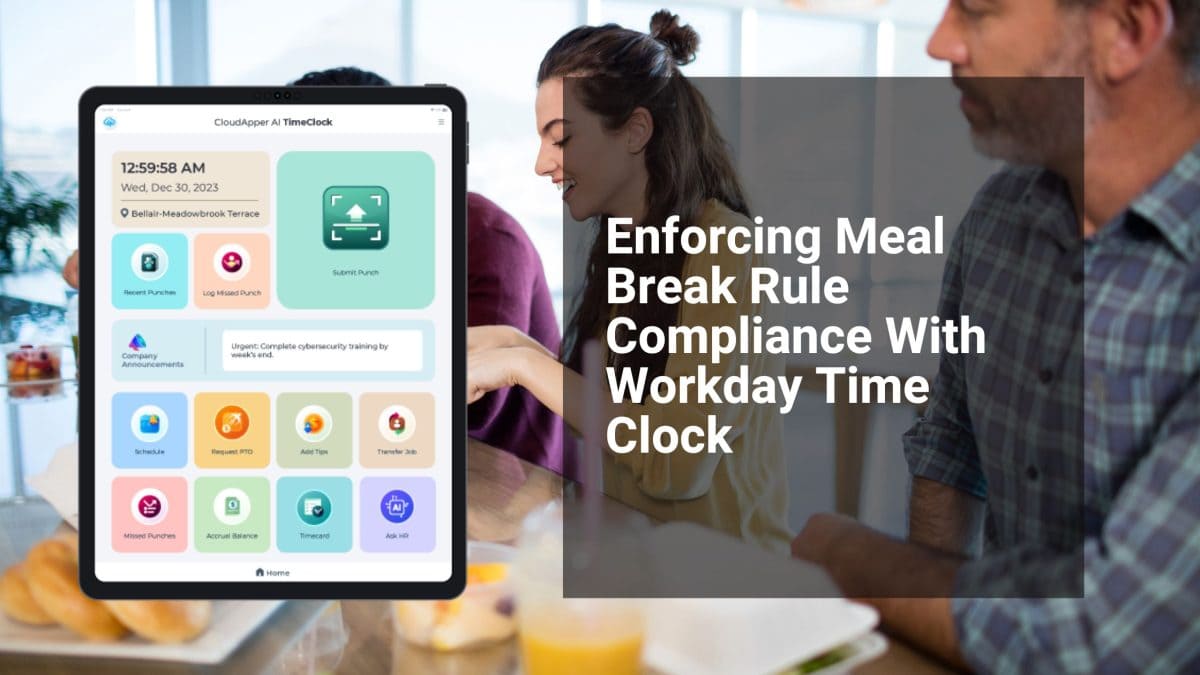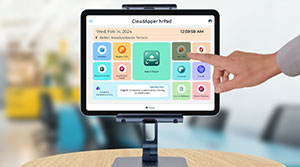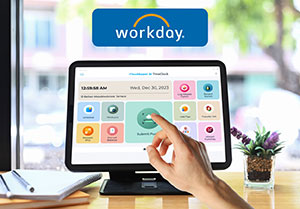Enforcing meal break rules ensures employee well-being and legal compliance. Discover how innovative solutions like CloudApper AI TimeClock simplify tracking and enforcement with Workday Time Clocks.
Table of Contents
As an experienced HR manager, I’ve seen firsthand the importance of enforcing compliance with meal break rules in the workplace. Allowing employees to take their designated breaks not only supports their well-being but also helps businesses stay aligned with federal and state regulations. With innovative solutions like CloudApper AI TimeClock, we can simplify and streamline the process of ensuring compliance with meal break policies. By transforming tablets into cost-effective, AI time clocks, CloudApper provides touchless face ID check-ins, geofencing, and customizable break tracking options. This seamless integration with Workday Time Clock and other major HR platforms enhances accuracy and compliance effortlessly, reducing manual workload while keeping data reliable and up-to-date.
For more information on CloudApper AI TimeClock visit our page here.
Understanding Meal Break Rule Compliance
Meal break rule compliance is the adherence to laws and regulations requiring employees to take meal breaks during their shifts. These regulations differ by state and frequently mandate employees to take a set amount of uninterrupted time for meals after working a particular number of hours. Noncompliance with these standards may result in sanctions for employers and a detrimental impact on staff morale and productivity.
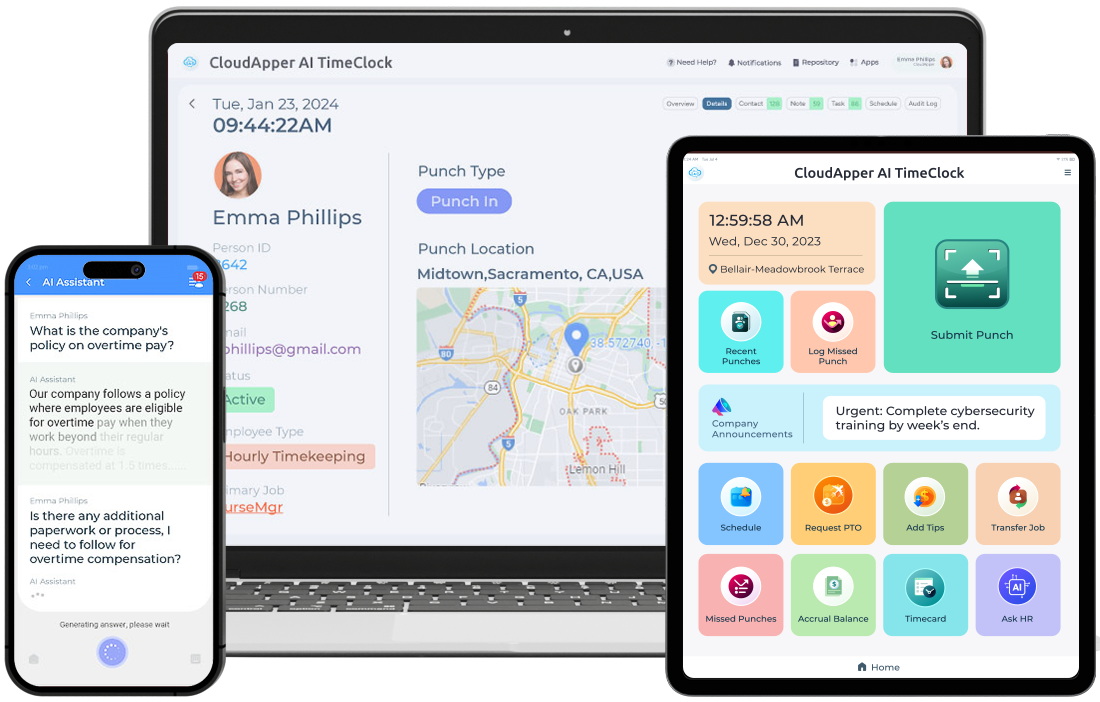
Meal Break Rule Across The United States
The meal and rest break laws vary by state in the U.S. Here are some key points based on the provided sources:
- Connecticut: Employers must provide a 30-minute meal break to employees who work at least seven and a half consecutive hours. This break is unpaid and must be given after the first two hours of work.
- Delaware: Employees working at least seven and a half consecutive hours must be given a 30-minute meal break, which should be provided after the first two hours and before the last two hours of the shift.
- D.C., Florida, Georgia, Hawaii, Idaho: These states do not require meal and rest breaks.
- Illinois: Employees who work at least seven and a half continuous hours are entitled to an unpaid meal break of at least 20 minutes, starting no later than five hours after the beginning of the shift. Hotel room attendants are entitled to a longer meal break of 30 minutes if they work at least seven hours.
- Pennsylvania: Employers of seasonal farmworkers are required to provide rest breaks, giving employees a 30-minute break after five hours of work. This break may be unpaid.
- West Virginia, Wisconsin, Wyoming: Employers are not required to give rest breaks. Meal breaks are provided for employees working more than 6 consecutive hours or under specific age requirements.
These laws highlight the variations in meal and rest break requirements across different states in the U.S., emphasizing the importance of understanding state-specific regulations for both employers and employees.
The Significance of Enforcing Meal Break Rule Compliance
Enforcing the meal break guideline is critical for various reasons. For starters, it enhances employee health and well-being by allowing them enough time to rest and recharge throughout the workday. Additionally, it assists firms in avoiding legal penalties and potential lawsuits resulting from labor law infractions. Organizations that proactively enforce meal break compliance demonstrate their commitment to employee well-being and legal conformity.
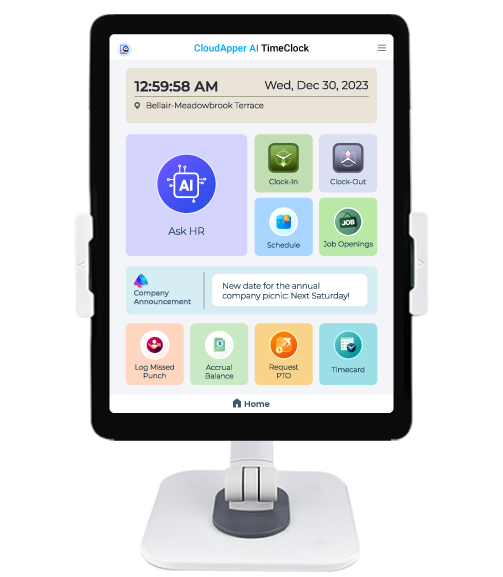
Latest Trends and Developments
Recent developments in labor-management show an increased emphasis on meal break compliance and the use of technology to streamline enforcement. Many firms use Workday Time Clocks like CloudAppper AI TimeClock in conjunction with advanced Workday Time Tracking software to automate meal break tracking and maintain compliance. These technologies help firms comply with meal break laws by providing automatic reminders, real-time monitoring, and customisable reporting.
FAQs About Enforcing Meal Break Rule Compliance
Q: Why is enforcing meal break rule compliance important?
A: Enforcing meal break rule compliance promotes employee well-being, helps organizations avoid legal liabilities, and fosters a positive work culture.
Q: How can a Workday Time Clock help enforce meal break compliance?
A: A Workday Time Clock integrated with solutions like CloudApper AI TimeClock can automate meal break tracking, send reminders to employees, and generate reports to ensure compliance with meal break regulations.
Q: What are the key features of CloudApper AI TimeClock for meal break compliance?
A: CloudApper AI TimeClock offers features such as automated reminders, real-time monitoring, and customizable reporting to streamline meal break compliance efforts.
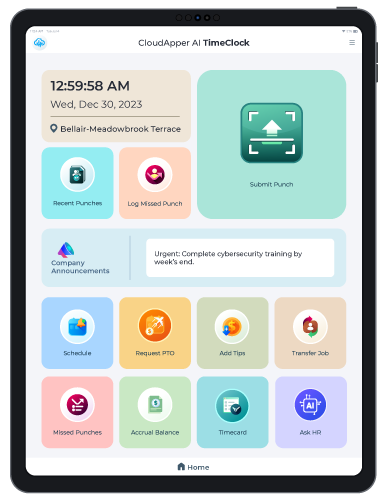
CloudApper AI Time Clock
Potpourri Group Inc. Improved Their Efficiency of Employee Time Management with CloudApper AI TimeClock
Expert Tips for Enforcing Meal Break Rule Compliance
Establish Clear Policies: Employees should be clearly informed about meal break policies, and compliance should be emphasized during training.
Utilize Technology: Use Workday Time Tracking Software in conjunction with new technologies like CloudApper AI TimeClock to automate meal break tracking and enforcement.
Regularly Monitor Compliance: Continuously monitor meal break compliance and address any issues or concerns proactively to ensure adherence to regulations.
Finally, enforcing meal break rules at work is critical for improving employee well-being and avoiding legal ramifications. Organizations can automate lunch break tracking while remaining compliant with state and federal standards by utilizing technology solutions such as CloudApper AI TimeClock connected with Workday Time Tracking Software. Embrace the future of labor management by focusing on lunch break compliance and using creative tools to streamline enforcement operations.
What is CloudApper AI Platform?
CloudApper AI is an advanced platform that enables organizations to integrate AI into their existing enterprise systems effortlessly, without the need for technical expertise, costly development, or upgrading the underlying infrastructure. By transforming legacy systems into AI-capable solutions, CloudApper allows companies to harness the power of Generative AI quickly and efficiently. This approach has been successfully implemented with leading systems like UKG, Workday, Oracle, Paradox, Amazon AWS Bedrock and can be applied across various industries, helping businesses enhance productivity, automate processes, and gain deeper insights without the usual complexities. With CloudApper AI, you can start experiencing the transformative benefits of AI today. Learn More

Brochure
CloudApper hrPad
Empower Frontline Employees with an AI-Powered Tablet/iPad Solution
Download Brochure
CloudApper AI Solutions for HR



- Works with








- and more.
Similar Posts
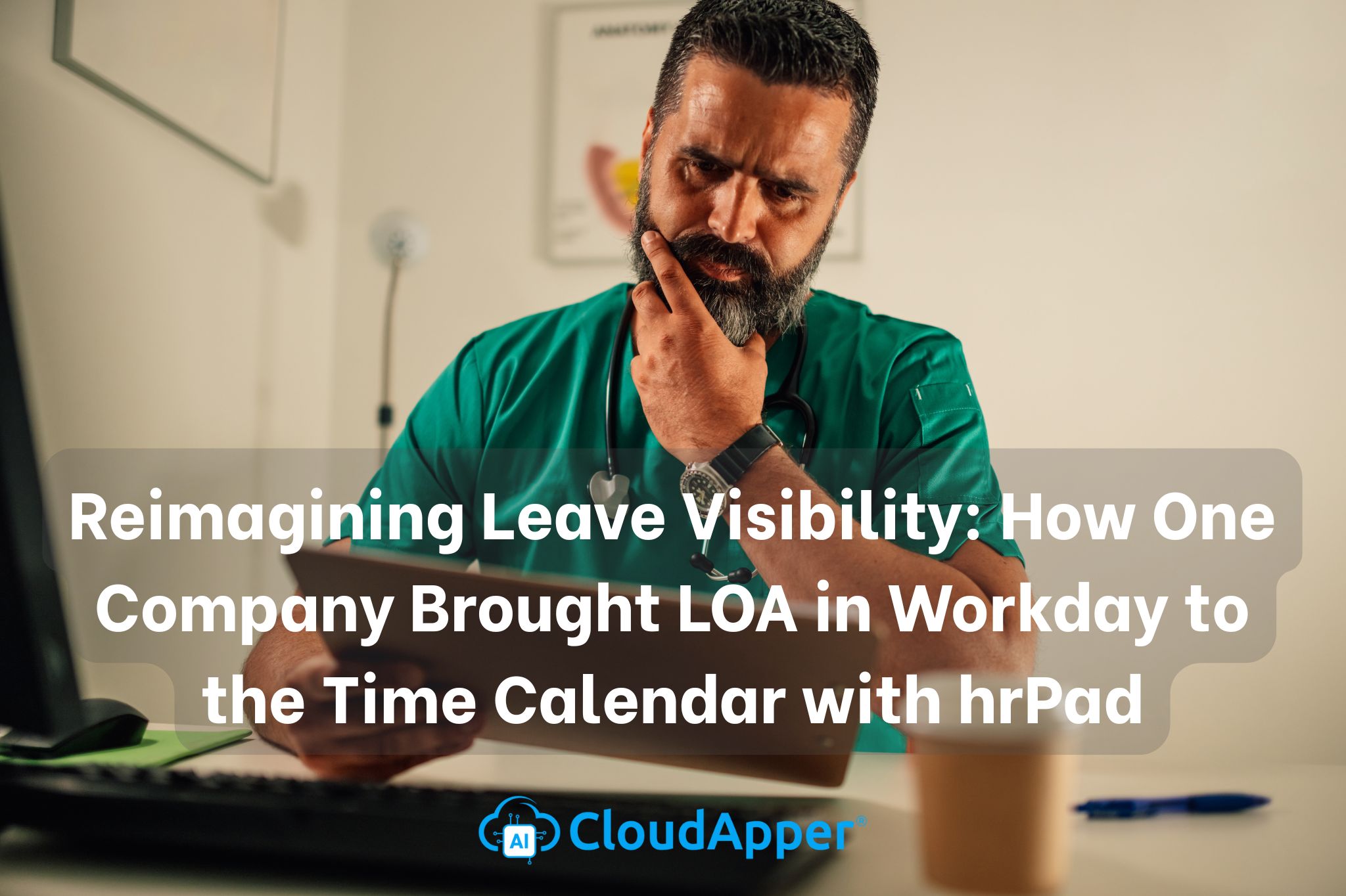
Reimagining Leave Visibility: How One Company Brought LOA in Workday…
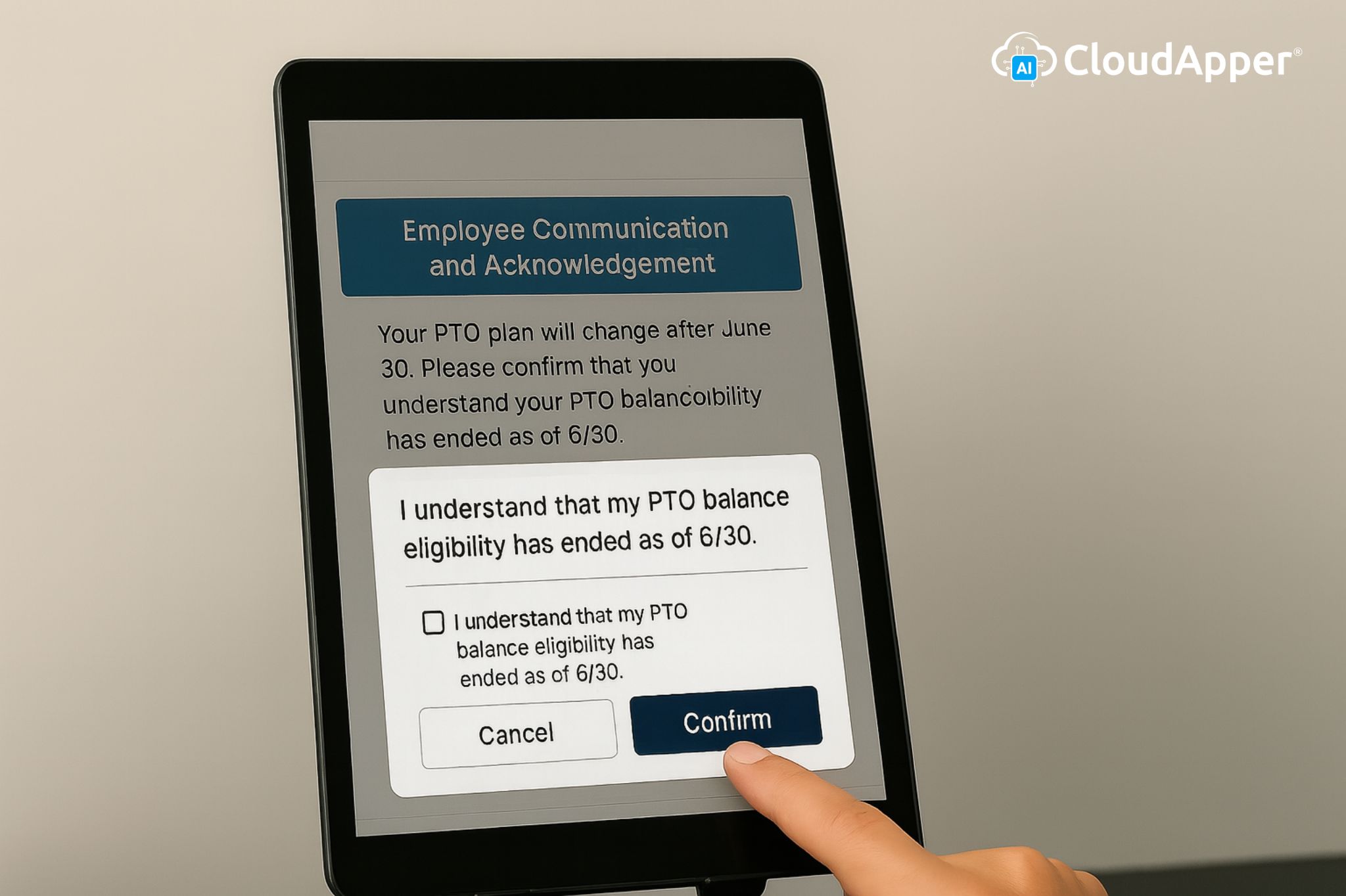
Improving Employee Communication and Acknowledgement During Workday Time Off Plan…

